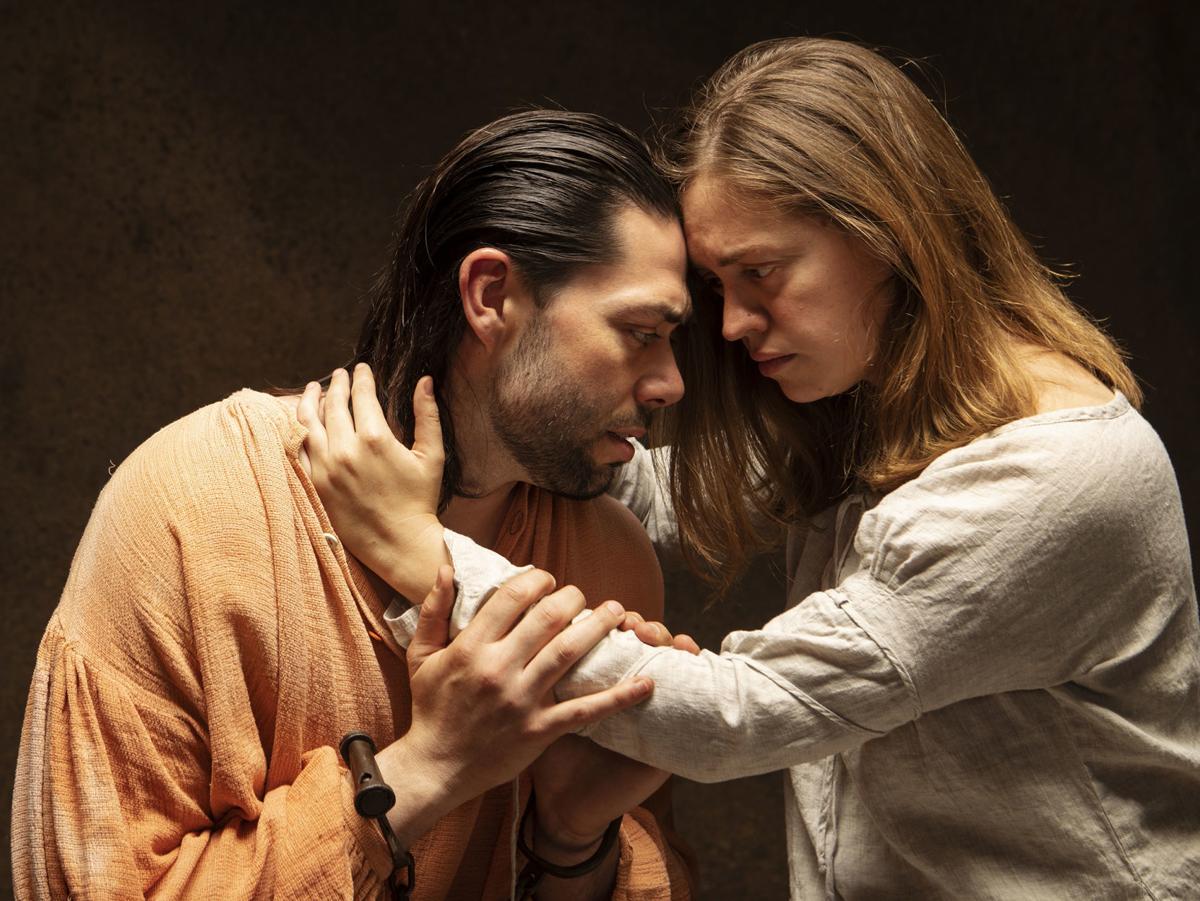“The Crucible” was first seen on stage in 1953.
The Arthur Miller play about the Salem witch trials in 1692-93 didn’t win many fans.
It has since been recognized as a classic. The Rogue Theatre, which loves classics, is closing its season with the drama.
Here’s a primer on the play:
The genesis
Miller wrote this play at the height of one of the darkest times in our history: the Red Scare.
After World War II, a fear of communists rose in this country. In 1950, the McCarran Internal Security Act required those deemed “subversive” in this country to be under government supervision. In an atmosphere of fear and near-hysteria, the House Un-American Activities Committee, led by U.S. Sen. Joseph McCarthy, hunted communists or sympathizers.
They were painted as threats to America’s security. The committee demanded people turn in names of others or face consequences.
Often, accusations were made with no proof. Jobs were lost, people were imprisoned, suicides occurred and few had the courage to speak out against McCarthy to point out freedom of speech was a constitutional right or that accusations without proof were not the American way.
It was this atmosphere that prompted Miller to write “The Crucible,” basing it loosely on the Salem witch trials.
“‘The Crucible’ was an act of desperation,” Miller wrote in a 1966 New Yorker article.
“By 1950, when I began to think of writing about the hunt for Reds in America, I was motivated in some great part by the paralysis that had set in among many liberals who, despite their discomfort with the inquisitors’ violations of civil rights, were fearful, and with good reason, of being identified as covert Communists if they should protest too strongly.”
The story
It is Salem, Massachusetts, in the late 17th century. A group of teens is seen dancing in the forest when one of them slips into a comatose state, and then a second girl does. The rumors begin: They are witches.
The accusations escalate as one person after another is accused of hanging with the devil.
Abigail, one of those dancing in the forest, is leading the charge. She points a finger at Elizabeth Proctor, the wife of the man she had a brief affair with. Her goal: That Elizabeth hangs and John Proctor can be hers.
False confessions are signed in a hope that admitting to being an instrument of the devil will save their lives. Fingers are pointed, accusing them of being witches or devils.
Let the trials begin.
The ideas
Miller weaves several themes throughout his play. He demonstrates how contagious hysteria is and how it drowns out voices of reason.
There’s also the fear of losing a good reputation — back then, if a person’s reputation was damaged, they stood to lose everything.
And it touches on the abuse of power, the burden of guilt, the constraints of religion and the danger of deception.
The characters
John Proctor — a farmer who despises hypocrisy yet betrays his wife.
Abigail Williams — a one-time servant in the Procter house who had a brief affair with Proctor. When his wife suspects it, Abigail is fired. When she finds herself at the center of the witch hysteria, she realizes an awful power.
Elizabeth Proctor — John’s wife. She is accused of being a witch by Abigail.
Rev. Parris — This guy’s a weasel, greedy and selfish and obsessed with his reputation. Nobody likes him, of course.
Rev. Hale — An expert witch-hunter; he cannot wait to demonstrate that talent when he goes to Salem.
There are a slew of other characters, many of them quite unlikable, such as Thomas Putnam, who is rich and wants to get richer. He accuses others of witchcraft so he can buy their land.
Why you want to see it
Well, Arthur Miller is pretty brilliant.
And then there is this: The play tackles government that abandons working for the masses so that it can benefit the few.
The playwright also makes it clear that speaking up and against irrationalities and lies is essential.
And Miller laid bare what can happen when those in power stoke fears about the other.





